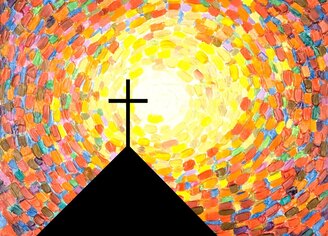 Mark 16:2-8 Out of the four Gospels, Mark has the shortest account of the first Easter. I think this was a story-telling device used by the apostle Peter. John Mark, the gospel writer, had traveled with Paul and Barnabas but had ended up as a companion of Peter. There is no telling how many times Mark had listened to Peter tell his story about Jesus. If, as I suppose, the Gospel of Mark is Mark’s recollection of Peter’s story, then this ending is the all-time greatest “come back tomorrow to hear some more” story. Imagine listening to Peter tell his story. You had heard about this new religion that has been growing for years. And then you were surprised to find out that you knew some Christians yourself. And they invited you to meet someone who knew Jesus. It is going to take about two and a half to three hours to tell. It is the greatest story ever told and Peter tells it very well. It is full of human drama, ups and downs, twists and turns. And toward the end you hear Peter’s tearful confession of denying Jesus three times. You are stunned to hear that someone so wonderfully loving as Jesus could be executed as a criminal. How could that happen? And then you hear these seven verses, Mark 16:2-8. The three women go to the tomb and find the stone rolled away. There is a man sitting inside the tomb. He tells the women, “Don’t be alarmed! You are looking for Jesus from Nazareth, who was nailed to a cross. God has raised him to life, and he isn’t here. You can see the place where they put his body. Now go and tell his disciples, and especially Peter, that he will go ahead of you to Galilee. You will see him there, just as he told you.” When the women ran from the tomb, they were confused and shaking all over. They were too afraid to tell anyone what had happened. “Wait! What? Peter, how did you find out? When did the women finally tell you? Did you go to Galilee? Did you see him? What happened?” Peter answers, “Come back tomorrow night and I will tell you more.” There is so much more!
0 Comments
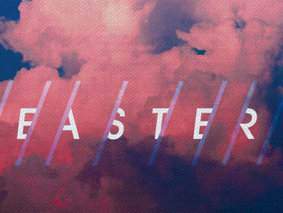 Mark 16:1 I call this “Dark Saturday” for two reasons. First, Jesus is in his tomb. There are stories about what Jesus did while he was dead but none of them are biblical. The Apostles’ Creed Ecumenical Version says that “he descended to the dead” which is not very enlightening. Second, the Bible tells us very little about that Saturday after Jesus was crucified. Matthew tells us that the chief priests and Pharisees got permission from Pilate to guard the tomb of Jesus. Luke says, “They rested on the Sabbath.” John says nothing about that day. And Mark tells us that after sundown on Saturday “Mary Magdalene, Salome, and Mary the mother of James bought some spices to put on Jesus’ body.” Mary Magdalene was not a former prostitute. Neither is there any indication that she was the woman who anointed Jesus’ feet. Nor is there any reason to conflate her with Mary the sister of Martha and Lazarus. Luke 8:1-3 lists Mary Magdalene with Joanna and Susanna as women who had been healed by Jesus and were using what they owned to help Jesus and his disciples. This passage also says that Mary once had seven demons in her. Magdala, for which she gets the moniker Magdalene, was a city on the western shore of Lake Galilee. Salome is identified in Matthew 27:56 as the mother of the sons of Zebedee. The sons of Zebedee are James and John. John 19:25 identifies Salome as the sister of Jesus’ mother, Mary. That would mean that Salome is Jesus’ aunt and that James and John are his first cousins. Mary the mother of James is almost certainly also Jesus’ mother. James, the brother of Jesus, was well known in the church as the first bishop of Jerusalem. I am not sure why Mark refers to Mary as the mother of James and not as the mother Jesus. My supposition is that Peter, from whom Mark received this first-hand account of Jesus, always wanted to include James, the leader of the church in Jerusalem, in his telling of the gospel story.  Mark 15:1-47 We call it “Good Friday” because it was good for us. Jesus died for us, for the forgiveness of our sins which have earned us death (see Romans 6:23). This was God’s plan. Read Jesus’ description of his role as the good shepherd (John 10:7-18). “I came so that everyone would have life, and have it in its fullest.” “The Father loves me, because I give up my life, so that I may receive it back again. No one takes my life from me. I give it up willingly! I have the power to give it up and the power to receive it back again, just as my Father commanded me to do.” Jesus remained silent before Pilate because if he had offered any defense of himself then Pilate would have been unwilling to have Jesus crucified. The whipping given to a condemned person was meant to weaken them before they were crucified. Carrying their own cross was also a method of weakening the condemned. Simon of Cyrene is mentioned for helping to carry Jesus’ cross but also for the sake of his sons Alexander and Rufus who were known in the church. Jesus was offered a mixture of wine and drugs designed to ease the shock of crucifixion. But Jesus refused to drink it – he was taking our suffering upon himself and he wanted to make sure that he got all of it. (Stop and think about that.) They nailed Jesus to a cross at about mid-morning (9 am). At about noon Jesus shouted out, “My God, my God, why have you deserted me?” Jesus is using the words of Psalm 22 to express what is happening to him. Many people believe that God had actually deserted Jesus because Jesus had become a sinner by taking our sins upon himself. But that is not our experience of being sinners. We are sinners but God does not desert us. If God deserted sinners, then none of us would have ever known God. But sin does separate us from God – it moves us away from God and makes it harder for us to recognize God’s presence in our lives. Jesus was experiencing this distance from God for the first time in his life. It was one human experience that Jesus had never had – separation from God through sin. (If you want to know how this plays out then read all of Psalm 22.) It is my belief that Jesus did not die from crucifixion but from separation from God because of our sins – this means that no one is more guilty of killing Jesus than we are. Jesus died and the curtain in the temple tore in two from top to bottom. The Jewish temple in Jerusalem had six segregated parts: 1) The outer court or Court of the Women where any Jewish person could go (the women had a special door where they could stand and look into the inner court to see a sacrifice that was being made specifically for them). 2) The Court of the Israelites where Jewish men could go inside the inner court. 3) The Court of the Priests where any priest could go at any time. 4) The area of sacrificing where only priests who were working in the temple could go. 5) The Holy Place where only priests could go who were doing very specific jobs. 6) The Holy of Holies, the throne of God, where only the High Priest could go only one day a year. The curtain separated the Holy Place from the Holy of Holies or in other words in separated the people from God. The tearing of the curtain shows that God is now directly available to the people – there are no more segregated levels of access. A Roman army officer watched Jesus die. He had probably watched many people die in battle, on crosses, and other ways. But watching Jesus die was different and he knew it. He said, “This man really was the Son of God!” Jesus’ friends now had less than three hours to get him down from the cross, clean his body, and find a place to put him before the beginning of the Sabbath at sunset. Joseph of Arimathea went to Pilate to ask permission to do this. Pilate was surprised that Jesus was already dead. Crucified people sometimes lived for days hanging on a cross. Jesus and the two criminals were crucified in an old rock quarry just outside the walls of Jerusalem. Joseph of Arimathea and other Jews had begun using the old quarry as a place of burial – rock that was not good enough for building was good enough for tombs. Joseph had Jesus’ body prepared and entombed there less than two hundred feet from where he was crucified. 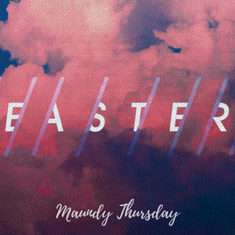 Mark 14:12-72 Three major stories happen here on Thursday: 1. The Last Supper The Festival of Thin Bread (Passover) begins at sundown on Thursday. Jesus and his disciples gather in an upper room in Jerusalem for the Passover meal and the traditional Jewish liturgy that goes along with the meal. During the meal Jesus changed the meaning of Passover for his followers and established a new agreement between God and God’s people. We call this new agreement Holy Communion, Eucharist, or the Lord’s Supper. It is, for us, a sharing in the life, death, and resurrection of Jesus by making his sacrificed body and blood part of our body and blood, together. We do this together to show that we are also binding ourselves to one another as the living, breathing, working, and loving body of Christ. 2. The Prayer, Betrayal, Arrest, and Questioning of Jesus Jesus leads his disciples to the Mount of Olives and the Garden of Gethsemane where he wrestles in prayer with the sacrifice that God is asking him to make. Jesus comes to the same conclusion that his mother reached some thirty years earlier when God asked her to sacrifice her life: “I will do whatever God wants me to do.” Judas comes with a mob of men armed with swords and clubs and betrays Jesus with a kiss. Jesus is arrested and all of his disciples ran off and left him. Jesus was led off to the house of the high priest and Peter followed at a distance. Jesus is put on trial and questioned before the Jewish council. Finally, the high priest asks Jesus, “Are you the Messiah, the Son of the glorious God?” “Yes, I am!” Jesus answered. 3. Peter’s Denial Peter and all the disciples had sworn that they would never deny knowing Jesus even if it meant they would be killed. But now none are left except Peter and he is keeping his distance from Jesus. A servant girl asserts to Peter, “You were with Jesus from Nazareth!” Peter replied, “That’s not true!” Later she tells others, “This man is one of them!” “No, I’m not!” Peter replied. Later some of the people said to Peter, “You certainly are one of them. You’re a Galilean!” Peter cursed and swore, “I don’t even know the man you’re talking about!” Then the rooster crowed a second time. Three times – because you can’t claim that it was a slip of the tongue, or a mistake, or a moment of weakness. Three times because that is who you are deep down in a place you cannot control and cannot hide. And Peter cried – and we cry with him. 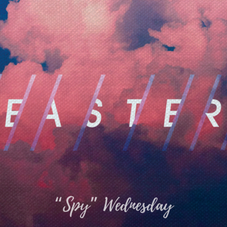 Mark 14:3-11 Mark’s account of Wednesday during the first Holy Week is just 9 verses – 1 verse longer than his account of Monday. This still tops Luke, who writes just 6 verses about Wednesday, and John, who gives no information about the Monday, Tuesday, Wednesday, and Saturday of the first Holy Week. “Jesus was eating in Bethany at the home of Simon, who once had leprosy, when a woman came in with a very expensive bottle of sweet-smelling perfume. After breaking it open, she poured the perfume on Jesus’ head. This made some the guests angry, and they complained, ‘Why such a waste? We could have sold this perfume for more than three hundred silver coins and given the money to the poor!’ So they started saying cruel things to the woman. “But Jesus said: Leave her alone! Why are you bothering her? She has done a beautiful thing for me. You will always have the poor with you. And whenever you want to, you can give to them. But you won’t always have me here with you. She has done all she could by pouring perfume on my body to prepare it for burial. You may be sure that wherever the good news is told all over the world, people will remember what she has done. And they will tell others. “Judas Iscariot was one of the twelve disciples. He went to the chief priests and offered to help them arrest Jesus. They were glad to hear this, and they promised to pay him. So Judas started looking for a good chance to betray Jesus.” Jesus’ disciples and closest friends still don’t understand that he is about to die for them. But this woman does. Somehow she knows and she wants to express her love and gratitude for Jesus. She gives what she has to Jesus, including loving hands and total devotion. And she is ridiculed for the giving. She is criticized for her generosity, which is characterized as wasteful and selfish. But Jesus defends her. “You could have found a poor person to take your place at this meal if you had wanted to help the poor. There will always be plenty of people who need help. But she wanted to help me.” Jesus tells us that she will always be remembered – but we don’t even know her name. Wednesday ends with Judas offering to betray Jesus to the chief priests. 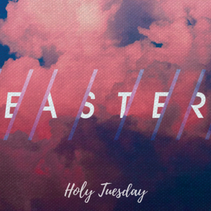 Mark 11:20 – 14:2 After they passed by the withered fig tree, Jesus and his disciples went back to the temple where the religious leaders questioned Jesus’ right to cleanse the temple, as he had done the day before. Jesus replies that he will answer their question if they can tell him who gave John the right to baptize people. But they are too wishy-washy to give any answer but “We don’t know.” Jesus tells a parable about a farmer who built and planted a vineyard and then leased it to others to maintain and harvest. But the renters did not what to pay the owner his share. They mistreated servants he sent to collect and then even killed the owner’s son thinking they would get the land. The religious leaders knew that this parable was about them but they were afraid to act against Jesus. “The Pharisees got together with Herod’s followers. Then they sent some men to trick Jesus into saying something wrong.” They asked Jesus about paying taxes to Caesar. Jesus answered, “Give to Caesar what belongs to Caesar and give to God what belongs to God.” “The Sadducees did not believe that people would rise to life after death. So some of them came to Jesus . . .” and proposed a situation that they thought would prove how ridiculous the idea of life after death is. But Jesus answered, “You know that in the story about Moses and the burning bush, God said, ‘I am the God worshiped by Abraham, Isaac, and Jacob.’ God isn’t the God of the dead, but of the living.” One of the teachers of the Law of Moses asked Jesus, “What is the most important commandment?” Jesus answered, “The most important one says: ‘People of Israel, you have only one Lord and God. You must love God with all your heart, soul, mind, and strength.” The second most important commandment says: ‘Love others as much as you love yourself.’ No other commandment is more important than these.” Jesus and his disciples watched a poor widow give two coins as an offering at the temple. Then Jesus said, “I tell you that this poor widow has put in more than all the others. Everyone else gave what they didn’t need. But she is very poor and gave everything she had. Now she doesn’t have a cent to live on.” Many people think this little story is about money and giving to your church. But I think this is a story that foreshadows what Jesus is going to do. Jesus is going to give everything he has for you and me. And he will die. Then as they are leaving the temple Jesus remarks that the buildings they admired will not be standing for very long. Later, on the Mount of Olives, Peter, James, John, and Andrew asked Jesus, “When will these things happen?” Jesus tells them to “watch out” and “be on your guard.” He tells them some of the signs of his return but then he says, “No one knows the day or the time. The angels in heaven don’t know, and the Son himself doesn’t know. Only the Father knows. So watch out and be ready!” As Tuesday comes to an end the religious leaders are planning how to have Jesus arrested without causing the people to riot. 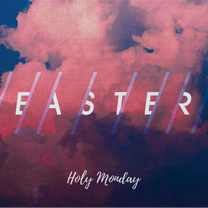 Mark 11:12-19 with verses 20-26 from Holy Tuesday “When Jesus and his disciples left Bethany the next morning, he was hungry.” This is the beginning of a two-part story which includes verses 12, 13, and 14 here on a Monday morning and then verses 20 through 26 which describes what happened the next morning. I am going to include it here because Tuesday has enough to discuss without it. The fig tree is symbolic of Jerusalem. Jerusalem is fruit tree which does not bear fruit. The people of Jerusalem have not responded to their call as the Chosen People to be a light to the nations. They have taken the title of “Chosen” as an honor which bears privileges that will lift them up above all the other people of the world but does not require them to be a blessing or to act as a servant. So Jesus condemns the fig tree and his disciples are surprised when they find it dried up the next morning. Jesus tells his disciples that the power to do such a thing is a matter of faith and forgiveness. Faith that God is willing and waiting to help you do whatever needs to be done and forgiveness that is alive in your heart for those who hurt you because you are willing to ask and receive God’s forgiveness of your sins. “After Jesus and his disciples reached Jerusalem, he went into the temple and began chasing out everyone who was selling and buying. He turned over the tables of the moneychangers and the benches of those who were selling doves. Jesus would not let anyone carry things through the temple.” This has been one of the most misused passages of Scriptures in the history of the New Testament. Many people have tried to use this passage to justify what they think of as “righteous anger.” They say, “Jesus got angry and chased people out of the temple.” All four of the Gospels, Matthew, Mark, Luke, and John, include this story but not one of them say that Jesus got angry. Our problem is that we cannot imagine doing such a thing without being angry. We use anger to help us control other people and we cultivate anger as way to make sure that we are “right” and everybody else is “wrong.” But Jesus is very clear about anger in The Sermon on the Mount (Matthew 5:21-26): anger is not to be used or cultivated or it will take us down a very dark path. It is not hard to imagine what was happening: Herod the Great had started an expansion of courtyards surrounding the temple precinct. Only Jews could enter the temple precinct and no buying or selling went on within the temple precinct. But the temple precinct was surrounded by large courtyards on the north and the south and by more slender courtyards on the east and west. Most of the buying and selling probably went on in the southern courtyard because the great majority of people entered the temple from the south and the southwest sides of the temple mount. Verse 16 speaks of Jesus not allowing people to carry things through the temple. In the time of Jesus the temple mount occupied about ¼ of the whole city. There were 8 to 12 gates to the temple mount and some of these could be used as short-cuts across Jerusalem. But as Jesus said, “The Scriptures say, ‘My house should be called a place of worship for all nations.’” “The chief priests and the teachers of the Law of Moses heard what Jesus said, and they started looking for a way to kill him.” 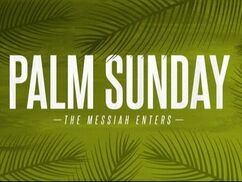 Mark 10:46 – 11:11 Mark is the only gospel that gives us a fairly clear indication of each day of the week during the first Holy Week, from Palm Sunday to Easter Sunday. Matthew and Luke do not distinguish between Monday and Tuesday. John appears to skip from Sunday to Thursday. So we are going to use Mark as our guide for Holy Week 2021. Jesus and his disciples are leaving Jericho going to Jerusalem. The trip for them would have been about 15 miles with a 3,400 feet elevation gain. (If you want to experience something like this without going to Israel then travel out to Guadalupe Mountains National Park and climb to the top of Texas at Guadalupe Peak. The weather and the terrain are similar but the trail is only 4.2 miles.) Jesus and his disciples, who were used to walking and in their 20s or 30s probably made it to Jerusalem in about 6 hours. But first, they encountered Bartimaeus – a blind man sitting next to the road and shouting, “Jesus, Son of David, have pity on me!” When Bartimaeus is told that Jesus is calling him he jumps to his feet and runs to Jesus. Bartimaeus RAN to Jesus! I think there is a message here for us! Jesus asked, “What do you want me to do for you?” Some of the disciples probably thought, “Jesus! He’s blind! What do you think he wants?” But Jesus wants us to be clear about what we want from him and he wants to hear us say it. “Master, I want to see!” Bartimaeus answered. What do you want from Jesus? In the first six verses of chapter 11 we have a strange little story about what Jesus knows. They are entering Bethphage and Bethany which are on the east side of the Mount of Olives. Jesus sends two of his disciples ahead and tells them what to do and what will happen. Is this a miracle of Jesus’ foreknowledge or a product of his familiarity with the village of Bethany, home of his friends Mary, Martha, and Lazarus? Jesus got on the donkey and began the climb to the top of the Mount of Olives and then down the western side. Along the way “many people spread clothes on the road, while others went to cut branches from the fields.” This was one way that the Jewish people welcomed a famous person. The people shouted, “Hosanna! God bless the one who comes in the name of the Lord!” This cry of greeting comes from Psalm 118:25-26 and is a plea for help from God in the form of a Messiah. This is spelled out even more specifically in verse 10, “God bless the coming kingdom of our ancestor David. Hosanna! to God on high!” Jesus then crossed the Kidron Valley and went into the temple to see and to be seen. Then he and the disciples returned to Bethany for the night. Holy Week marks the seven days leading up to the celebration on Easter Sunday. For each day this week, we’ve created a devotional for you to engage with the Easter story through God’s Word. Each daily devotional includes a selected reading from Scripture and a prompt to help you ponder the loving-kindness of our God. Our hope is that each day leads your heart to worship, your mind to awe, and your actions to grace and mercy as you reflect on this great God, who so loved us that He gave up His one and only Son for us.
|
AuthorWrite something about yourself. No need to be fancy, just an overview. ArchivesCategories |
Location |
Our MissionCaring for the needs of our church and community through prayer, deeds, inspiration and love in the Spirit of Christ.
Sunday Worship: 10 am Adult & Children & Youth Sunday School 9 am First Kids Mother's Day Out (Tuesday & Thursday; 8am to 2pm; Ages 1-3) Rev Pat Bell, Pastor First United Methodist Church Sealy
200 Atchison Street Sealy, Texas 77474 979.885.2223 |
Contact Us |
 RSS Feed
RSS Feed